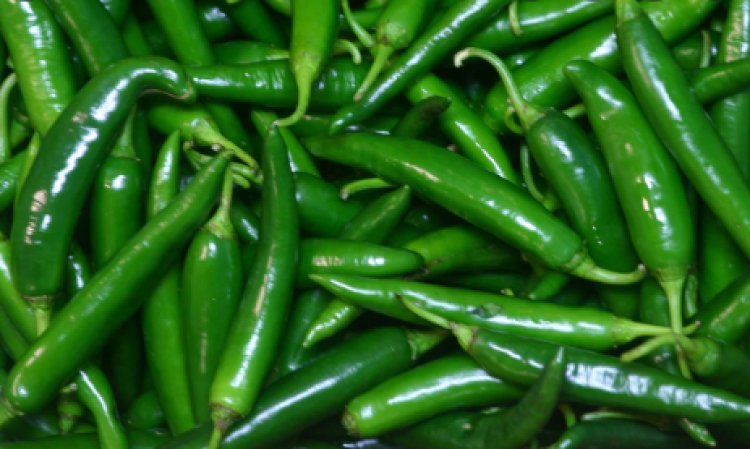How to Grow Green Chilies in Your Backyard
Growing chili is ideal for all gardeners, regardless of their level of experience. Although green chilies are simple to grow, make sure you are giving the plant enough water because both overwatering and underwatering might stunt the plant's growth.

Select the Proper Growing Environments
The first step in growing green chilies is choosing the right growing conditions. One needs to check on temperature, availability of sunlight, potting soil, irrigation, and fertilizer.
Temperature: Humid and warm climates are ideal for the growth of chilies; the best range for developing green chili is between 22 and 25 °C.
Sunlight: The environment selected must get 5 to 6 hours of sunlight per day, and the pots need to be placed on a partially shaded spot.
Potting Mix: Use organic potting soil enhanced with helpful bacteria that promote plant growth. It encourages growth by supplying vital nutrients, safeguarding the seeds, and healthily preserving moisture.
Irrigation: These plants do not require a lot of water; thus, water only when the top layer of the soil appears dry.
Fertilizers: Use organic fertilizers such as composted food materials, leaves, fruit peels, and cow dung.
Sow in a seed tray

A seed tray offers the ideal atmosphere for the seeds to germinate well. Spread the chili seeds on the organic soil-filled seed tray. Add a thin layer of soil or potting mix above the seeds to cover them lightly. The seeds will begin germinating if you keep them warm and wet for a week or two. You can plant directly on the ground, in pots with drainage holes, or on a seedling tray. Sow two to three seeds into each cell using a tray so you may transplant the healthiest plant from that cell. Keep 2 to 3 inches of spacing between the seeds when planting in the ground or pots.
Germination of green chili
To grow a plant to its greatest potential, selecting the appropriate pot is crucial. A pot with adequate drainage holes would be excellent for growing chilies. Once the seeds have germinated in the seed tray pick out the seedlings and plant them separately in the pots or containers you have chosen. Move the pot into a sunny area and water it if the top layer of soil feels very dry.
Transplanting the seedlings
Transplant your seedlings to pots or the garden when they are 5 to 6 cm tall. To grow chilies easily, choose the healthiest plant and transplant it carefully without uprooting it. Choose larger pots, then add soil to them. Add fertilizers like plant food and vermicompost if your soil is deficient in organic matter. Place the seedlings in your garden, which has organic soil and plenty of sunlight. Make sure to give them plenty of water.

Harvesting and storing
Your chilies should be ready to pick in about two months. You can even dry some chilies and store them for use throughout the year since you will probably have more than you will need.
Conclusion
It is advisable to plant seeds that have not been genetically altered in order to guarantee the quality of the yield. One of the frequently used ingredients in many dishes, such as curries and pickles, is chili. Although chilies can be used in dried form, it is preferable to have them fresh for particular dishes.
Due to their high vitamin C and antioxidant content, chilies have been discovered to help reduce lifestyle diseases, such as certain cancers and stomach ulcers. They have also been linked to weight loss and a reduced incidence of type II diabetes because of their capacity to generate heat within the body.




























